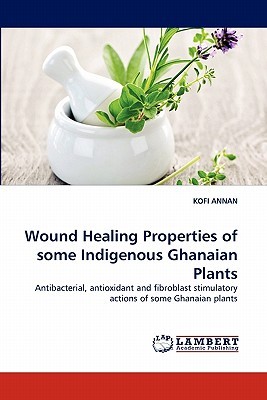
- We will send in 10–14 business days.
- Author: Kofi Annan
- Publisher: LAP Lambert Academic Publishing
- ISBN-10: 3843371695
- ISBN-13: 9783843371698
- Format: 15.2 x 22.9 x 1.3 cm, minkšti viršeliai
- Language: English
- SAVE -10% with code: EXTRA
Wound Healing Properties of Some Indigenous Ghanaian Plants (e-book) (used book) | bookbook.eu
Reviews
Description
The work involves the investigation of 6 indigenous Ghanaian plants P. pinnata, H. opposita, G. arboreum, A. nobilis, F. asperifolia and B. aegyptiaca used for the treatment of bacterial infections and wounds. It also describes the isolation and characterization of the active principles from P. pinnata. Extracts were assessed for in vitro antibacterial activity, usingwild-type and resistant strains of Staph.aureus. P.pinnata, H. opposita, G. arboreum and F. asperifolia showed antibacterial activity. The active compounds in P. pinnata were isolated, using chromatographic techniques and identified with the aid of NMR spectroscopy. The wound healing action of the plant extracts were assessed using in vitro models. P.pinnata, G. arboreum and F. asperifolia at concentrations from 1 to 25µg/ml had a significant stimulatory effect on the proliferation of HDF (142BR) cells. Paullilupeol and paullilupeone isolated from P. pinnata, showed a dose-dependent increase in proliferation of the up to 3µM. All extracts at concentrations 1 to 50µg/ml, had a statistically significant antioxidant protective effect against hydrogen peroxide induced damage to 142BR cells.
EXTRA 10 % discount with code: EXTRA
The promotion ends in 22d.06:52:54
The discount code is valid when purchasing from 10 €. Discounts do not stack.
- Author: Kofi Annan
- Publisher: LAP Lambert Academic Publishing
- ISBN-10: 3843371695
- ISBN-13: 9783843371698
- Format: 15.2 x 22.9 x 1.3 cm, minkšti viršeliai
- Language: English English
The work involves the investigation of 6 indigenous Ghanaian plants P. pinnata, H. opposita, G. arboreum, A. nobilis, F. asperifolia and B. aegyptiaca used for the treatment of bacterial infections and wounds. It also describes the isolation and characterization of the active principles from P. pinnata. Extracts were assessed for in vitro antibacterial activity, usingwild-type and resistant strains of Staph.aureus. P.pinnata, H. opposita, G. arboreum and F. asperifolia showed antibacterial activity. The active compounds in P. pinnata were isolated, using chromatographic techniques and identified with the aid of NMR spectroscopy. The wound healing action of the plant extracts were assessed using in vitro models. P.pinnata, G. arboreum and F. asperifolia at concentrations from 1 to 25µg/ml had a significant stimulatory effect on the proliferation of HDF (142BR) cells. Paullilupeol and paullilupeone isolated from P. pinnata, showed a dose-dependent increase in proliferation of the up to 3µM. All extracts at concentrations 1 to 50µg/ml, had a statistically significant antioxidant protective effect against hydrogen peroxide induced damage to 142BR cells.


Reviews